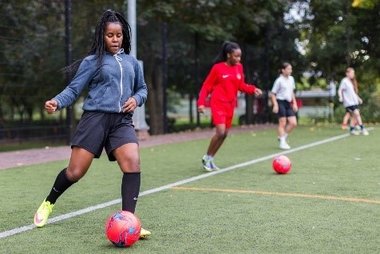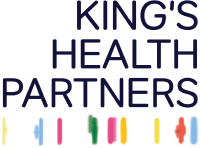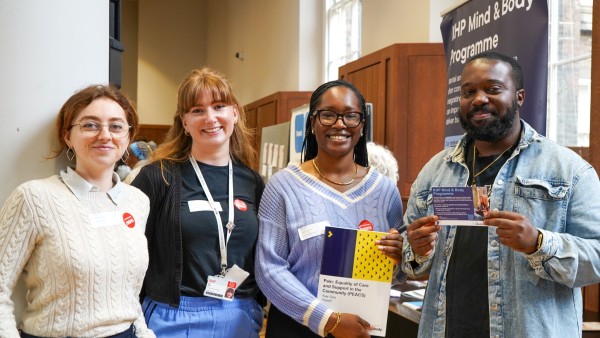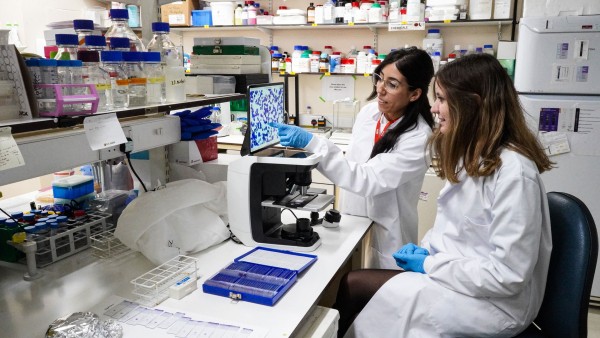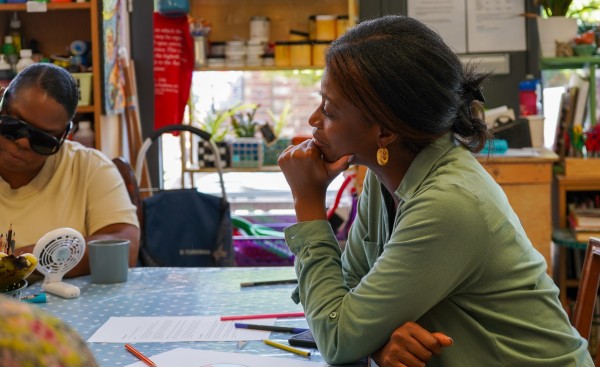14 July 2021
Alex Gibbons from London Sports talks about the impact of COVID-19 on physical activity and how we can increase it to tackle inequalities.
Can you introduce us to your role and the work of London Sport?
I am the Deputy Director of Operations at London Sport, where we aim to make London the most active city in the world. We are supported by Sport England and the Mayor of London, and work in partnership with London’s Local Authorities and a host of agencies to support less active Londoners to build physical activity habits that support their health, wellbeing and prosperity.
A key part of my role is to ensure funding goes to the right organisations, reaching Londoners experiencing the most profound inequalities, including deaf and disabled people, people with long- term health conditions, ethnically diverse communities and those from lower socio-economic groups. Increasing and improving opportunities for these groups to be more physically active leads to numerous physical, mental, social and economic benefits.
What do we know about the relationship between physical activity and population health?
People who have a physically active lifestyle have a 20-35% lower risk of cardiovascular disease, coronary heart disease and stroke compared to those who have a sedentary lifestyle. Regular physical activity is also associated with a reduced risk of diabetes, obesity, osteoporosis and colon and breast cancer and with improved mental health. In older adults, physical activity is associated with increased functional capacities. We also know reducing inactivity could prevent up to 40% of many long-term conditions.
However, despite these numerous benefits, over one in four women and one in five men do less than 30 minutes of physical activity a week, so are classified as ‘inactive’.
This lack of physical activity across much of the population is a health inequality issue influenced by several factors. These include social and personal factors such as age, gender, ethnicity, disability, where a person lives, whether they have a job, financial circumstances or a combination of more than one of these.
At London Sport we are seeking to address these inequalities and ensure Londoners no longer miss out on the health benefits of being more active.
What has been the impact of the COVID-19 pandemic and where do we go from here?
Insight from a survey carried out for Sport England by Savanta ComRes showed that certain groups of people were being disproportionately affected by the pandemic, significantly impacting their ability to be physically active. The response to this was the introduction of the Sport England Tackling Inequalities Fund, designed to help the sport and physical activity sector through the ongoing COVID-19 crisis.
To date, £640,000 of this fund has been devolved to London Sport. We have used our extensive local data and insight to reach community partners across London, a total of 58 projects across almost all of London’s 33 boroughs. Projects include a Virtual Inclusive Games, which engages with young disabled Londoners, achieving almost 12,000 entries over eight weeks. Projects also include London Youth’s programme, aimed at young people from underrepresented groups, and fantastic local projects such as virtual dance for the over 50s in Bexley and Merton Mencap TV, supporting people with learning disabilities to be fit and active at home.
The innovation seen in these projects, and several others, is changing the way we work in the sport and physical activity sector. It has been an incredibly difficult time for many, but by being forced to think differently, we are beginning to see entirely new types of opportunities for those who will benefit the most.
Your aim is to make London the most physically active city in the world. How can staff and students get involved – either directly or through helping patients into physical activity?
Talk to your patients. There are fantastic resources to help healthcare professionals integrate physical activity conversations into routine clinical care, such as Moving Medicine.
You could also recommend hospitals become “active hospitals", using this toolkit to change the physical activity culture within the hospitals to encourage patients to move more.
Finally, the Sport England and Public Health England collaboration Moving Healthcare Professionals, supports healthcare professionals to increase their knowledge and skills, and incorporate physical activity within routine care to support quality improvement and better patient outcomes.
Our “Inside Population Health” series is designed to help staff and students understand the inequalities and inequity in south east London, and what part we can all play to address these challenges.
